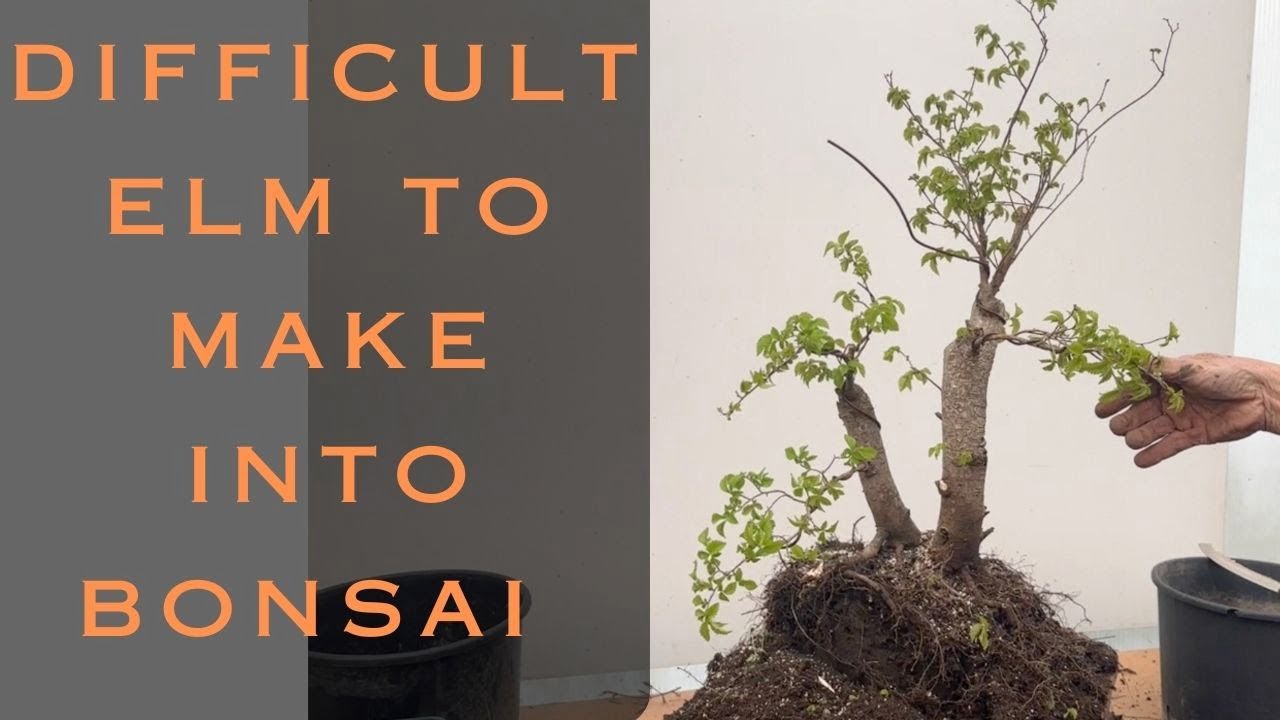If you’ve ever wanted to venture into the world of bonsai trees, the Siberian Elm Bonsai should definitely be on your list. In this article, I will guide you through the art of growing a Siberian Elm Bonsai, providing you with unique and comprehensive information that is sure to capture your interest.
From uncommon strategies and techniques to expert opinion and research, I will break down the process in a casual and clear writing style. So, whether you’re a beginner or an expert, get ready to delve into the fascinating world of growing your very own Siberian Elm Bonsai.
Choosing the Right Siberian Elm Bonsai
When it comes to selecting the right Siberian Elm Bonsai, there are several factors that you need to consider. From climate and location to the tree’s health and shape, each aspect plays a crucial role in determining the success of your bonsai journey. In this comprehensive guide, I will take you through the essential steps of choosing the right Siberian Elm Bonsai and provide you with expert tips to ensure its proper care and growth.
Consider Climate and Location
Before diving into the world of Siberian Elm Bonsai, it is important to understand your climate and location. Siberian Elm Bonsai is known for its adaptability and can tolerate a wide range of climates, from hot and dry to cold and snowy. However, it thrives best in temperate climates with moderate sunlight and humidity. Assess your local climate and ensure it aligns with the Siberian Elm Bonsai’s requirements.
When it comes to the location, Siberian Elm Bonsai prefers a sunny spot that receives at least 4-6 hours of sunlight per day. However, it is important to provide some protection from intense afternoon sun, especially during the hottest months. A well-ventilated location with good air circulation will also contribute to the overall health and growth of your bonsai.
Inspect the Tree’s Health
A healthy tree is the foundation for a successful bonsai. When choosing a Siberian Elm Bonsai, it is essential to inspect its health thoroughly. Start by examining the foliage. Look for vibrant, green leaves that are evenly distributed across the branches. Avoid bonsai with yellowing or wilting leaves, as this can be a sign of underlying issues.
Next, check the trunk and branches for any signs of damage or disease. A healthy Siberian Elm Bonsai should have a sturdy trunk and well-developed branches. Cracks, scars, or any signs of decay are indications of poor health. Similarly, check for pests such as aphids, mites, or scale insects. These can cause significant damage to your bonsai if not addressed promptly.
Evaluate the Shape and Size
The shape and size of a Siberian Elm Bonsai are crucial factors in creating a visually appealing and well-balanced bonsai. When evaluating the shape, look for a bonsai that has a well-defined trunk with tapering as it reaches the apex. The branches should be evenly spaced and in proportion to the overall size of the tree. Avoid bonsai with irregular or unbalanced shapes, as they can be challenging to prune and shape later on.
In terms of size, consider the space you have available for your bonsai. Siberian Elm Bonsai can range in size from small shohin bonsai (around 6 inches) to larger bonsai (up to 36 inches). Choose a size that fits well in your desired location and can be comfortably managed within your available space.
Potting and Repotting
Once you have chosen the perfect Siberian Elm Bonsai, the next step is potting and repotting. The choice of pot and potting mix plays a crucial role in the overall health and growth of your bonsai. Here’s what you need to know:
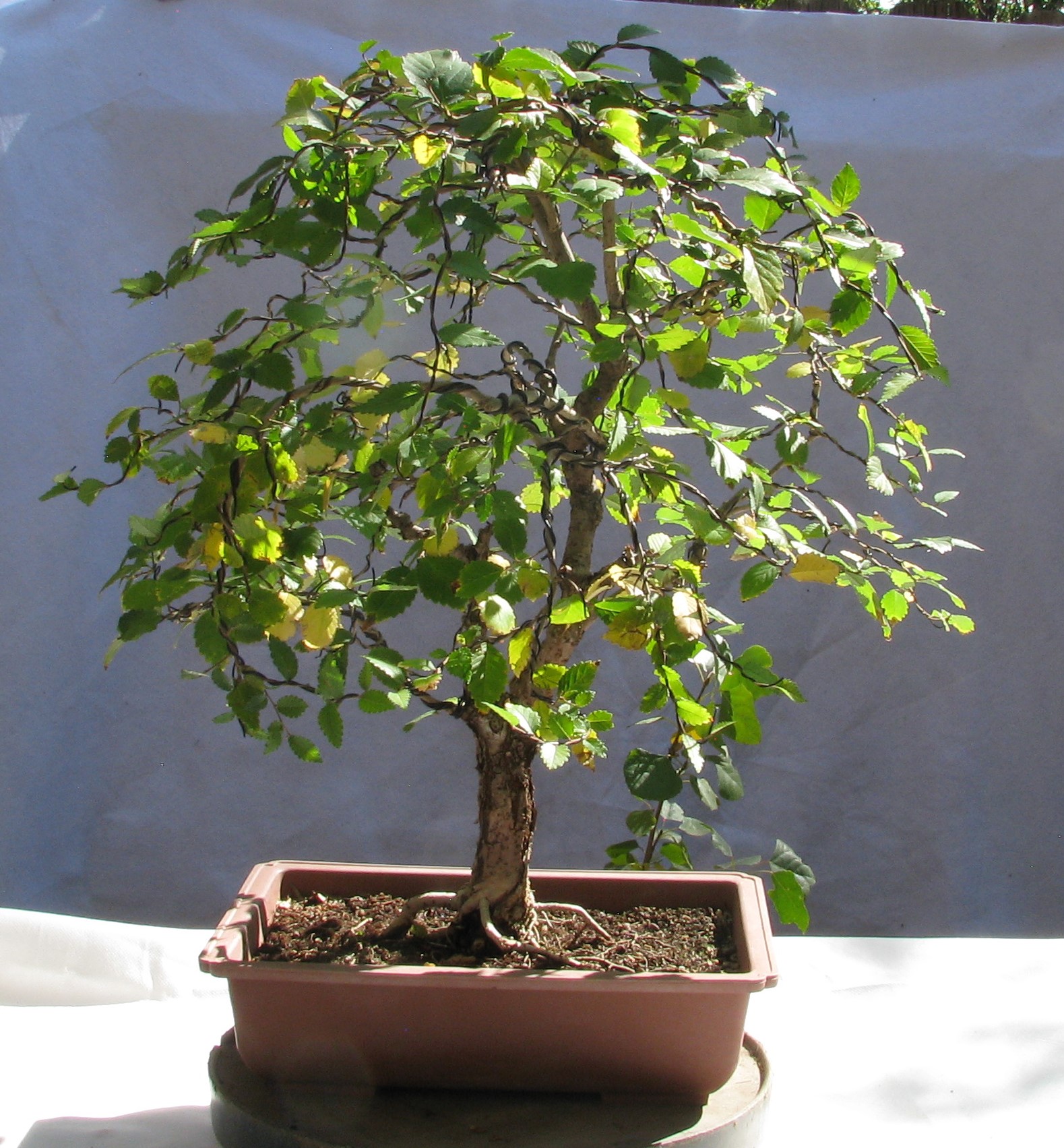
Select a Suitable Pot
When selecting a pot for your Siberian Elm Bonsai, there are a few factors to consider. First, choose a pot that is proportionate to the size of your bonsai. The pot should provide enough space for the roots to grow and develop without being too large or too small. Additionally, consider the material of the pot. Ceramic and clay pots are popular choices due to their aesthetic appeal and moisture regulation properties. However, plastic pots can also be used, especially for beginners, as they are lightweight and less prone to breakage.
Ensure that the pot has proper drainage holes to prevent waterlogging, which can lead to root rot. A pot with a drainage screen or mesh can also help keep the soil in place while allowing excess water to escape.
Prepare the Potting Mix
The potting mix is another crucial aspect of successful bonsai care. Siberian Elm Bonsai thrives in well-draining soil with good moisture retention. A common potting mix for bonsai consists of a combination of Akadama, pumice, and lava rock. Akadama is a type of volcanic clay that retains moisture while allowing for proper aeration. Pumice and lava rock enhance drainage and prevent soil compaction.
To prepare the potting mix, combine these components in the appropriate ratios. The exact ratio may vary depending on your climate and personal preferences. It is recommended to sieve the potting mix to remove any debris or fine particles before using it.
Repotting Tips
Repotting is a crucial part of bonsai care and should be done periodically to ensure the health and vitality of your Siberian Elm Bonsai. Repotting helps refresh the root system, prevent root-bound conditions, and promote healthy growth. Here are some tips to keep in mind:
- Repot your Siberian Elm Bonsai every 2-3 years, ideally in early spring before the new growth starts.
- Gently remove the bonsai from its current pot, minimizing any damage to the roots.
- Trim away any dead or damaged roots, as well as any densely tangled roots.
- Place a layer of fresh potting mix at the bottom of the new pot.
- Position the bonsai in the center of the pot and gradually add the potting mix, ensuring it fills the gaps between the roots.
- Water the bonsai thoroughly after repotting to settle the soil and provide hydration to the roots.
Pruning and Wiring Techniques
Pruning and wiring are essential techniques in bonsai cultivation. They help shape and refine the appearance of your Siberian Elm Bonsai, creating a visually appealing bonsai tree. Let’s delve into the details:
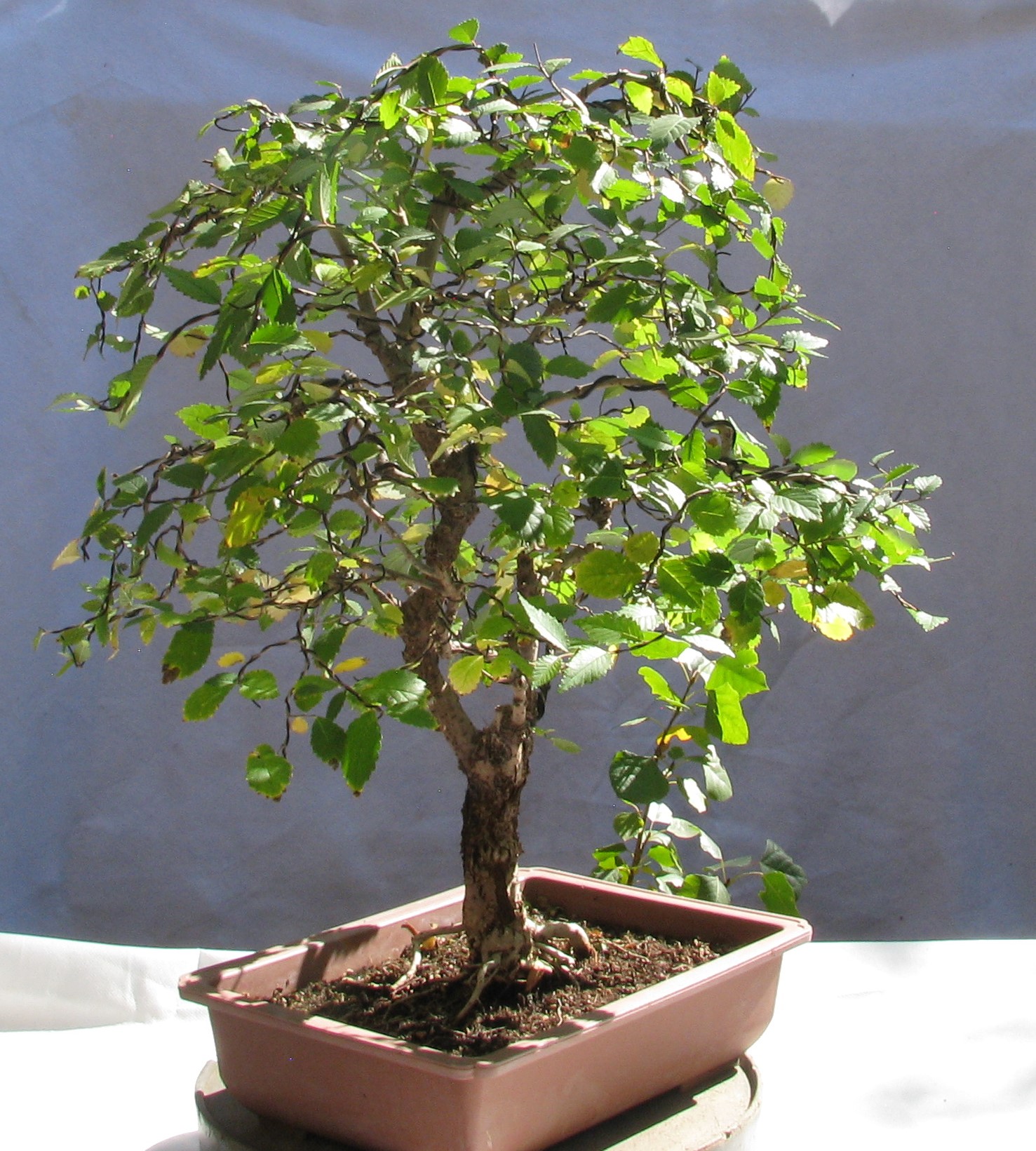
Pruning for Shape and Growth
Pruning is the process of selectively removing branches and foliage to create the desired shape and promote healthy growth. Pruning should be done with precision and careful consideration to ensure the best results. Here are some pruning tips for your Siberian Elm Bonsai:
- Use sharp and clean pruning shears or bonsai scissors to make clean cuts and minimize any damage to the branches.
- Prune during the dormant season or after the spring growth flush. Avoid pruning during periods of active growth to prevent excessive sap bleeding.
- Start by removing any dead, diseased, or crossing branches. This helps improve airflow and prevents the spread of diseases.
- Thin out dense foliage to allow sunlight to penetrate into the inner branches.
- Consider the desired shape and aesthetics when pruning. Remove branches that disrupt the overall balance or detract from the desired style.
Wiring for Structure and Style
Wiring is a technique used to bend and position branches, creating the desired structure and style in your bonsai. It is usually done after pruning to manipulate the shape and direction of the branches. Here’s what you need to know about wiring your Siberian Elm Bonsai:
- Choose the appropriate wire size for the branches you intend to wire. Thicker branches may require heavier-gauge wire to hold their shape.
- Start wiring from the base of the branch, gradually wrapping the wire along the branch while maintaining an even tension.
- Avoid over-tightening the wire, as it can damage the bark and restrict the flow of nutrients. Check frequently to ensure the wire is not causing any indentation.
- Leave the wire on for a sufficient period to allow the branch to set in its new position. This can vary depending on the vigor of the branch and the desired result.
- Remove the wire carefully once the branch has set. Use wire cutters to cut the wire in small sections to prevent branches from snapping back.
Timing and Frequency of Pruning and Wiring
The timing and frequency of pruning and wiring can greatly impact the health and growth of your Siberian Elm Bonsai. Proper timing ensures minimal stress on the tree and allows for optimal healing and recovery. Here are some general guidelines:
- Pruning can be done throughout the year, but it is best to avoid pruning during periods of active growth (spring and summer) to minimize stress.
- Major structural pruning is typically done during the dormant season (late winter or early spring) when the tree is not actively growing.
- Wiring can also be done throughout the year, but it is essential to check the wire frequently to prevent it from cutting into the bark.
- Remove the wire once the branches have set in their new position, usually after a few months. Avoid leaving the wire on for too long, as it can cause scarring.
Watering and Feeding
Proper watering and feeding are vital for the health and vitality of your Siberian Elm Bonsai. These practices ensure that the tree receives the necessary nutrients and moisture to thrive. Let’s explore the key aspects:
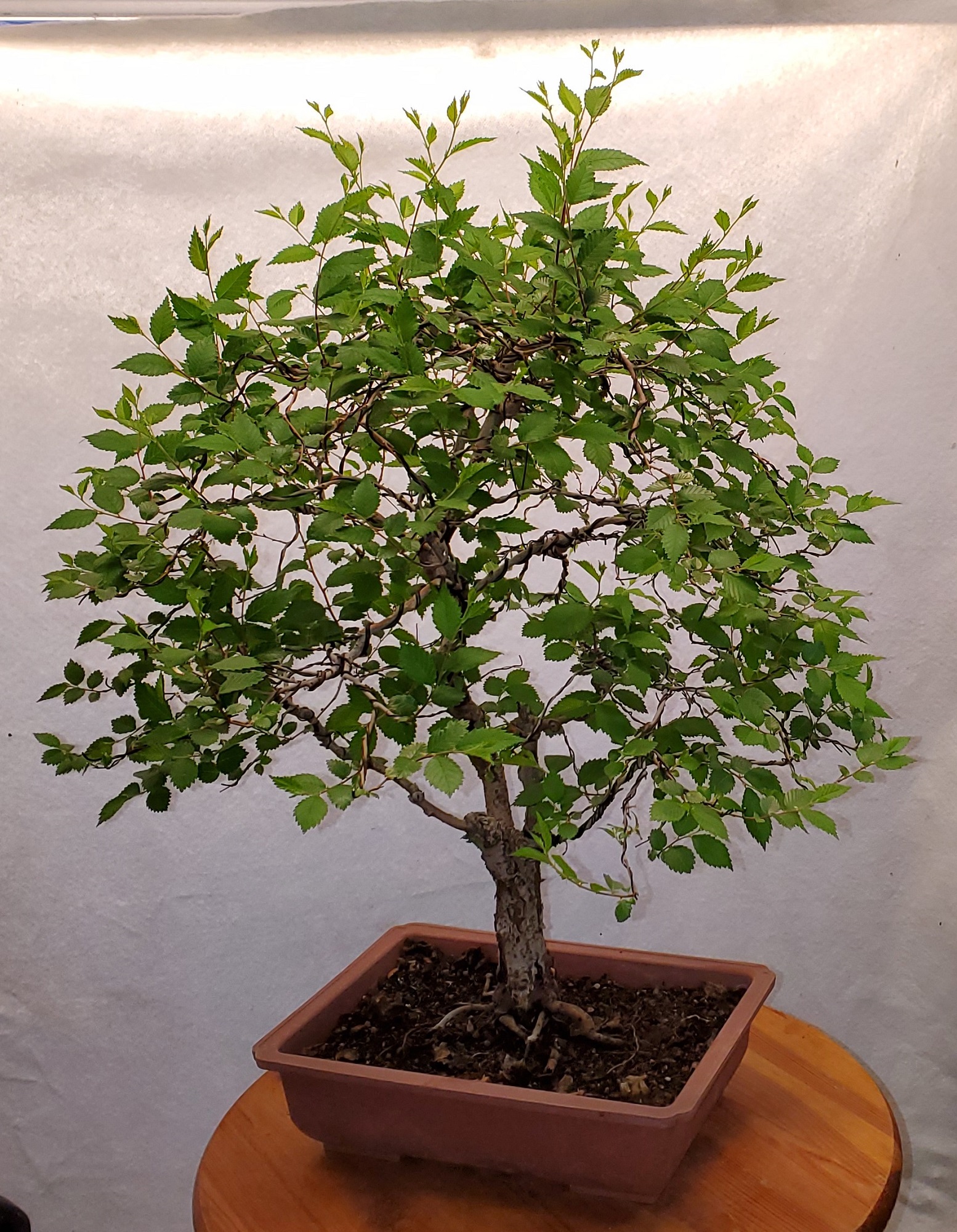
Understanding the Watering Needs
Watering your Siberian Elm Bonsai is a balancing act. It is important to provide enough moisture for the tree without overwatering, which can lead to root rot. Here are some guidelines to keep in mind:
- Only water when the topsoil feels slightly dry to the touch. Stick your finger about an inch into the soil to check the moisture level.
- Water thoroughly until the water drains out from the bottom of the pot. This ensures that the entire root system receives hydration.
- Avoid letting your bonsai sit in a saucer of water, as this can lead to waterlogging.
- Adjust your watering frequency based on the climate and season. During hot, dry periods, you may need to water more frequently, while in cooler seasons, you may need to reduce watering.
Choosing the Right Fertilizer
Fertilizing is essential to provide your Siberian Elm Bonsai with the necessary nutrients for healthy growth and development. There are various types of fertilizers available, including organic and synthetic options. Here are some considerations when choosing the right fertilizer:
- Select a balanced fertilizer with a ratio of nitrogen (N), phosphorus (P), and potassium (K), such as a 10-10-10 or 20-20-20 blend. This ensures that your bonsai receives a well-rounded nutrient supply.
- Consider slow-release fertilizers, which gradually release nutrients over an extended period. These can help maintain a consistent nutrient supply without the risk of overfertilization.
- Follow the manufacturer’s instructions regarding dosage and frequency of application. Overfertilizing can burn the roots and damage your bonsai.
Feeding Schedule
Establishing a feeding schedule for your Siberian Elm Bonsai is crucial for its overall health and growth. A consistent and balanced nutrient supply promotes strong root development, lush foliage, and vibrant blooms (if applicable). Here are some general feeding guidelines:
- Begin fertilizing in early spring, when the tree starts to show signs of new growth.
- Apply fertilizers according to the recommended dosage and frequency, adjusting as needed based on the vigor and growth of your bonsai.
- Reduce or suspend fertilizing during the dormant season (winter) when the tree is not actively growing.
- Monitor your bonsai for signs of nutrient deficiencies (yellowing leaves, stunted growth) or excesses (leaf burn, wilting), and adjust your feeding schedule accordingly.
Light and Temperature Requirements
Providing the right amount of light and managing temperature changes are essential for the health and development of your Siberian Elm Bonsai. Let’s explore these key aspects:
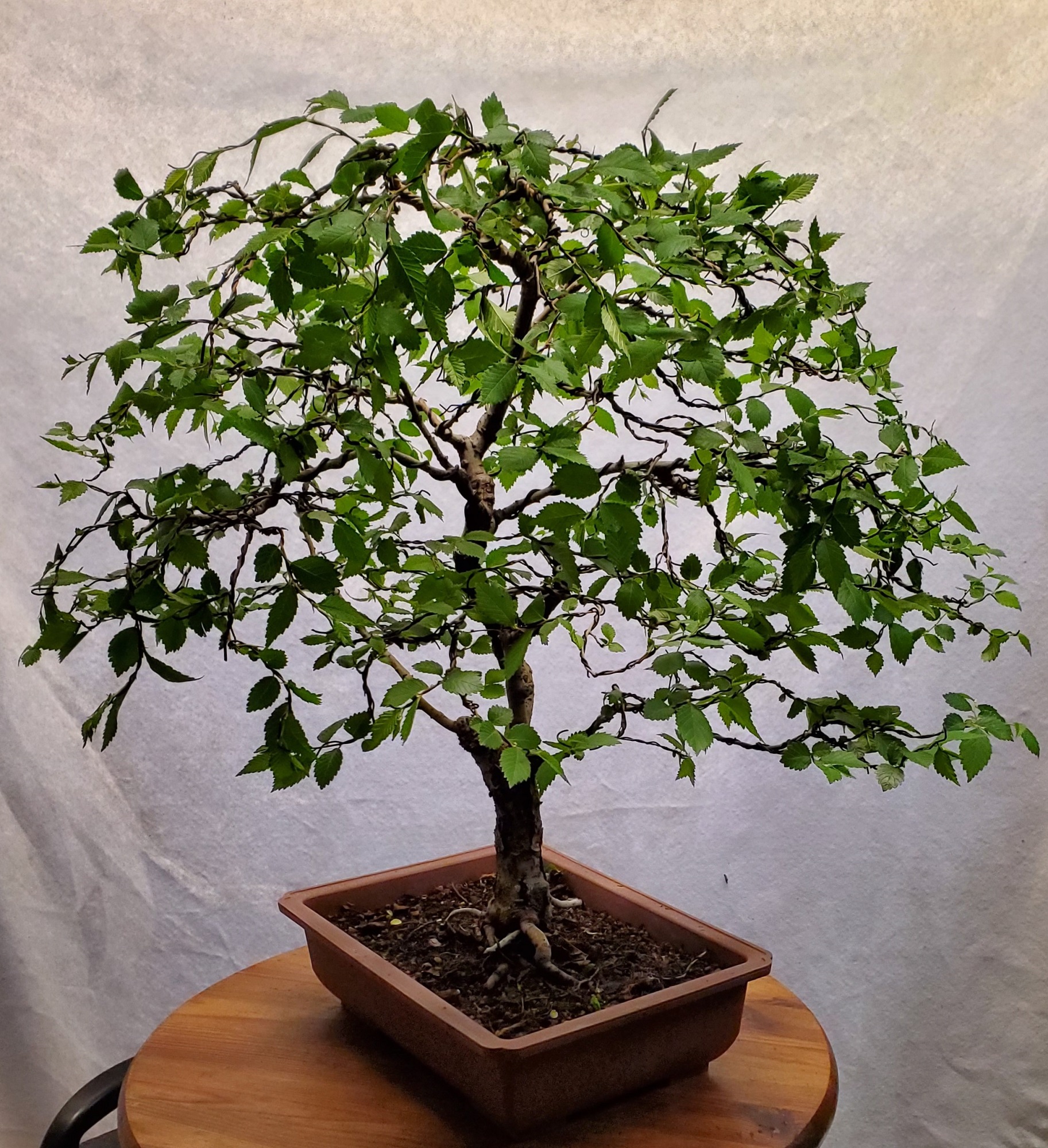
Providing Sufficient Light
Siberian Elm Bonsai thrives in bright, indirect sunlight. Exposure to adequate light promotes strong growth, vibrant foliage, and flowering (if applicable). Here are some tips for providing sufficient light:
- Place your bonsai in a sunny location that receives at least 4-6 hours of indirect sunlight per day.
- Protect your bonsai from intense afternoon sun, especially during the hottest months, to prevent leaf burn.
- Consider supplementing natural sunlight with artificial grow lights, especially in regions with limited sunlight or during the winter months.
- Rotate your bonsai regularly to ensure all sides receive equal light exposure and promote even growth.
Managing Temperature Changes
Siberian Elm Bonsai is known for its adaptability to a wide range of temperatures. However, extreme temperature fluctuations can be detrimental to its health. Here are some tips for managing temperature changes:
- Siberian Elm Bonsai thrives in temperate climates, with average temperatures ranging from 60°F to 80°F (15°C to 26°C). Avoid exposing it to extreme heat or cold.
- During the summer, provide shade or shelter to protect your bonsai from scorching temperatures.
- In colder regions, protect your bonsai from frost and freezing temperatures by bringing it indoors or providing some form of insulation.
- Monitor your bonsai closely during temperature changes and adjust its location or protection as needed to prevent stress or damage.
Winter Care
Winter care is crucial for the survival of your Siberian Elm Bonsai, especially in colder regions. Here are some guidelines to ensure your bonsai remains healthy during the winter months:
- Move your bonsai to a sheltered location, such as an unheated garage or a cold frame, to protect it from freezing temperatures and harsh winds.
- Reduce watering during the winter, as the tree’s growth slows down and requires less moisture.
- Monitor the moisture level in the soil to prevent it from drying out completely. Water sparingly only when the soil feels completely dry to the touch.
- Consider insulating the pot or wrapping the bonsai with burlap to provide additional protection against cold temperatures.
- Avoid fertilizing during the dormant season when the tree is not actively growing.
Pest and Disease Control
Just like any other plant, Siberian Elm Bonsai is susceptible to pests and diseases. Proper identification, preventive measures, and timely treatment are crucial for maintaining the health and vitality of your bonsai. Here’s what you need to know:
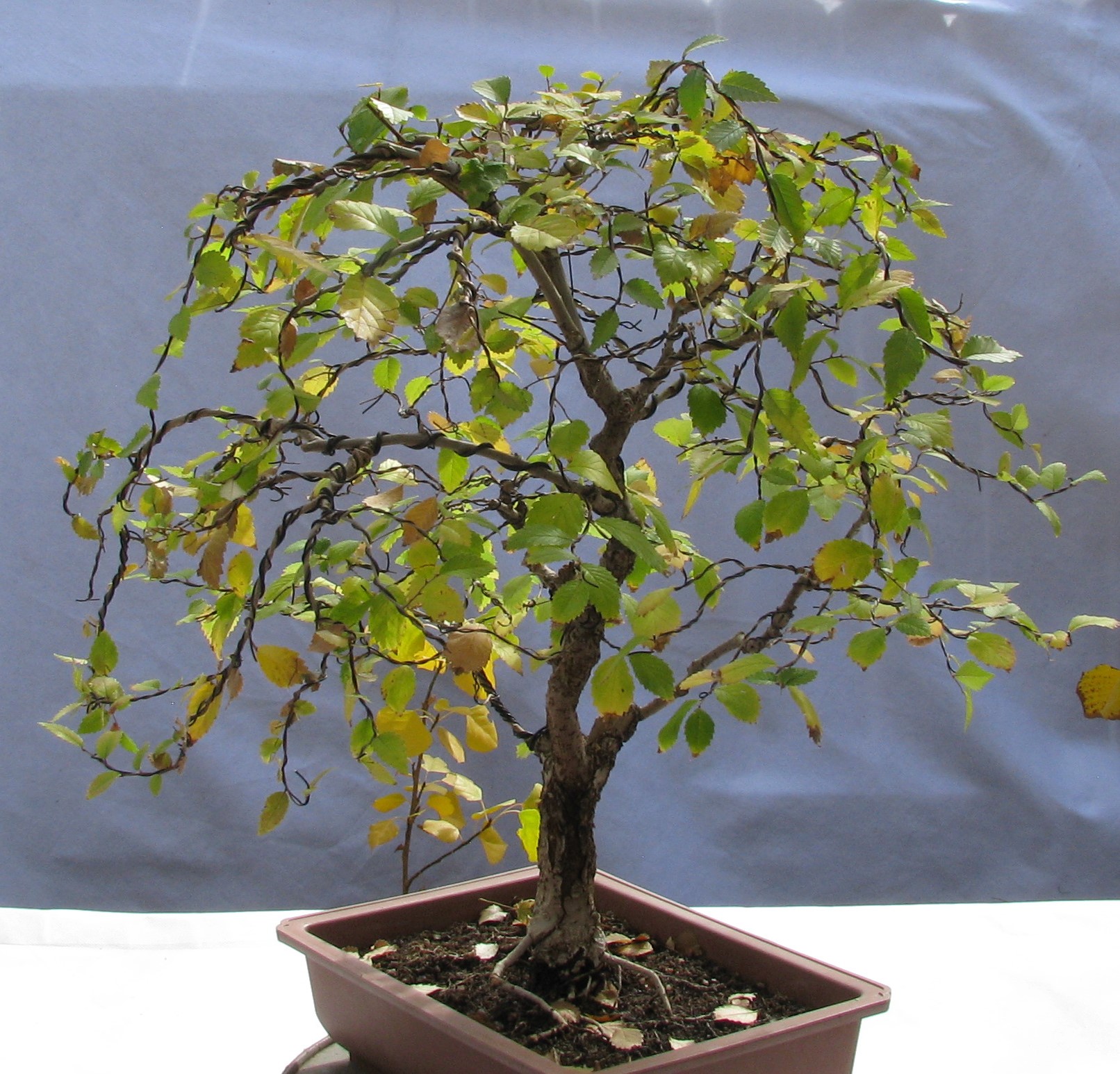
Identifying Common Pests and Diseases
Common pests that can affect Siberian Elm Bonsai include aphids, mites, scale insects, and caterpillars. These pests can cause damage to the foliage, weaken the tree, and spread diseases. Pay close attention to any signs of infestation, such as wilting leaves, sticky residue, or distorted growth.
Diseases that may affect your Siberian Elm Bonsai include fungal infections like leaf spot, powdery mildew, and root rot. These diseases can be caused by poor ventilation, excessive moisture, or inadequate sanitation practices.
Preventive Measures
Prevention is key when it comes to pest and disease control. Here are some preventive measures you can take to protect your Siberian Elm Bonsai:
- Maintain proper hygiene by keeping your bonsai clean and free from fallen leaves or debris. This helps prevent the buildup of pests and diseases.
- Avoid overwatering, as excess moisture can create favorable conditions for fungi and pests. Allow the soil to dry out slightly between waterings.
- Inspect your bonsai regularly for signs of infestation or disease. Take immediate action if any issues are detected to prevent further spread.
- Provide adequate ventilation by ensuring proper spacing between branches and foliage. Good airflow reduces the risk of fungal diseases.
Treatment Options
If your Siberian Elm Bonsai is affected by pests or diseases, timely treatment is crucial to prevent further damage. Here are some treatment options:
- For pests like aphids or mites, spray the affected areas with a gentle insecticidal soap or horticultural oil. Follow the manufacturer’s instructions for proper application.
- For fungal diseases, prune and remove the affected branches or leaves. Apply appropriate fungicides to prevent further spread.
- In severe cases, consult a professional bonsai specialist or horticulturist for targeted treatment options.
Training Techniques for Shape and Style
Training techniques are essential for shaping and refining the shape and style of your Siberian Elm Bonsai. These techniques enable you to create a visually appealing and balanced bonsai tree. Let’s explore some key training techniques:
Structural Pruning
Structural pruning involves shaping the overall structure and form of your Siberian Elm Bonsai. It helps define the primary branches, promote a balanced design, and improve the overall aesthetics. Here are some tips for structural pruning:
- Begin structural pruning during the early stages of the bonsai’s development.
- Identify the primary branches that form the foundation of the tree’s structure. These branches should be evenly spaced and in proportion to the overall size of the bonsai.
- Gradually remove unnecessary branches or shoots that disrupt the desired structure or detract from the overall aesthetics.
- Consider the desired style of your bonsai (informal upright, cascade, slanting, etc.) when making pruning decisions to achieve the desired overall shape and balance.
Wiring Techniques for Different Styles
Wiring is an essential technique for shaping and positioning branches to achieve the desired style in your Siberian Elm Bonsai. Different bonsai styles require specific wiring techniques. Here are some common styles and the corresponding wiring techniques:
- Informal Upright: This style features a curved trunk with a slight slant. Use wiring to create gentle curves in the trunk, emphasizing the natural flow and movement.
- Cascade: The cascade style portrays a tree growing on the edge of a cliff or over a water feature. Wire the branches downward, simulating the cascading effect.
- Slanting: In this style, the trunk has a pronounced slant. Wire the trunk and primary branches accordingly, emphasizing the slanted angle.
- Formal Upright: The formal upright style showcases a straight and upright trunk. Minimal wiring may be required for fine-tuning the branch positions.
Always use caution when wiring your bonsai to avoid damaging the branches or causing undue stress. Gradually wire branches into position, and check regularly to ensure it is not cutting into the bark.
Branch Development
Branch development is a crucial aspect of bonsai training. It involves promoting the growth of secondary and tertiary branches to enhance the overall density and balance of your Siberian Elm Bonsai. Here’s what you need to know:
- Encourage the growth of secondary branches through selective pruning. This helps reduce the dominance of the primary branches and creates a more refined appearance.
- Use directional pruning to encourage branches to grow in specific directions. This helps create a natural and balanced silhouette.
- Monitor the growth of the branches closely and make adjustments as needed to maintain the desired shape and style.
Creating a Beautiful Nebari
Nebari, also known as the surface root flare, is an important feature in bonsai, contributing to the overall aesthetics and balance of your Siberian Elm Bonsai. Here’s what you need to know about creating a beautiful nebari:
What is Nebari?
Nebari refers to the visible surface roots that radiate horizontally from the base of the trunk. A well-developed nebari adds stability, strength, and visual appeal to your bonsai. It creates a sense of age and maturity, making your Siberian Elm Bonsai more captivating.
Promoting Nebari Development
Promoting nebari development starts from the early stages of your bonsai’s growth. Here are some tips to encourage strong and beautiful nebari:
- During the early stages, expose the root flare by gradually reducing the soil level around the base of your bonsai.
- Gently brush away excess soil to reveal the surface roots and encourage their growth.
- Provide adequate space for the roots to grow laterally by planting your bonsai in a wider and shallower pot.
- Avoid excessive root pruning in the early years to allow the roots to develop and thicken.
Techniques for Nebari Improvement
If your Siberian Elm Bonsai lacks a well-developed nebari, there are techniques you can employ to enhance its appearance:
- Use air layering to encourage new root growth near the surface of the trunk. This technique involves creating a ring cut around the trunk, applying rooting hormone, and covering it with moist sphagnum moss to promote root growth.
- Grafting can also be used to improve the nebari. By grafting new roots onto the trunk or near the base, you can create a more visually appealing and balanced surface root system.
- Patience is key when it comes to nebari development. It takes time for the roots to grow and thicken, so be consistent with your care and give it the time it needs to flourish.
Propagation Methods
Propagating your Siberian Elm Bonsai allows you to expand your bonsai collection and experiment with different techniques. There are several methods of propagation, including seed propagation, cutting propagation, and air layering. Let’s explore each method:
Seed Propagation
Seed propagation is the most common and straightforward method of growing Siberian Elm Bonsai. Here’s how you can propagate from seeds:
- Collect ripe seeds from mature Siberian Elm trees during the fall.
- Soak the seeds in water for 24 hours to improve germination rates.
- Plant the seeds in a well-draining bonsai soil mix, covering them lightly with soil.
- Place the pots in a warm and sunny location, ensuring the soil remains consistently moist.
- Germination can take several weeks to months. Once the seedlings have reached a suitable size, they can be potted individually.
Cutting Propagation
Cutting propagation involves taking cuttings from a parent tree and encouraging them to root and grow. Here’s how you can propagate Siberian Elm Bonsai from cuttings:
- Take cuttings from the parent tree during the spring or early summer. Select healthy and vigorous branches for the best chances of success.
- Prepare the cuttings by removing the lower leaves and making a clean cut just below a node.
- Dip the cut end in rooting hormone to promote root development.
- Plant the cuttings in a well-draining bonsai soil mix, making sure to provide support to keep them upright.
- Place the cuttings in a warm and humid environment, such as a greenhouse or a propagating tray covered with a plastic bag.
- Mist the cuttings regularly to maintain high humidity and monitor them closely for signs of rooting.
Air Layering
Air layering is a more advanced propagation technique that allows you to propagate from a specific section of a mature branch. Here’s how you can air layer your Siberian Elm Bonsai:
- Select a suitable branch that is at least pencil-thick in diameter and has active growth.
- Make an upward 1-inch cut on the branch, followed by a horizontal cut just below it. Remove the bark and expose the cambium layer.
- Dust the cut area with rooting hormone powder to stimulate root growth.
- Cover the exposed area with moist sphagnum moss, wrapping it in plastic wrap to maintain moisture.
- Secure the moss and plastic with twine or electrical tape.
- Monitor the air layer regularly and mist the moss to keep it moist. Roots should start to develop within a few months.
- Once sufficient roots have formed, remove the air layer and plant it in a suitable bonsai pot.
Common Mistakes to Avoid
While growing a Siberian Elm Bonsai is a rewarding experience, it is essential to be aware of common mistakes that can hinder its progress. By avoiding these pitfalls, you can ensure the health and longevity of your bonsai. Here are some mistakes to watch out for:
Overwatering
Overwatering is one of the most common mistakes made by bonsai enthusiasts. Excessive moisture can lead to root rot and other fungal diseases. To avoid overwatering:
- Allow the soil to dry out slightly before watering.
- Use well-draining soil and pots with proper drainage holes.
- Adjust your watering frequency based on the climate and season.
Improper Pruning Techniques
Pruning is a delicate process that requires precision and knowledge. Improper pruning techniques can damage your Siberian Elm Bonsai and hinder its growth. To avoid improper pruning:
- Use sharp and clean pruning tools to make clean cuts.
- Educate yourself on different pruning techniques and timing.
- Start with minimal pruning and gradually progress to more intricate shaping.
Neglecting Pest Control
Pests can quickly infest your bonsai and cause significant damage if left untreated. Neglecting regular pest control can result in weakened trees and inhibited growth. To avoid neglecting pest control:
- Inspect your bonsai regularly for signs of infestation.
- Take immediate action if pests are detected, using appropriate treatments.
- Maintain good hygiene and cleanliness to prevent pest buildup.
By being proactive and avoiding these common mistakes, you can ensure that your Siberian Elm Bonsai thrives and flourishes under your care.
In conclusion, growing a Siberian Elm Bonsai requires careful consideration and attention to detail. By considering climate and location, inspecting the tree’s health, evaluating its shape and size, and following proper potting and repotting techniques, pruning and wiring techniques, watering and feeding practices, light and temperature requirements, pest and disease control measures, training techniques, nebari development techniques, propagation methods, and avoiding common mistakes, you can successfully cultivate a beautiful and healthy Siberian Elm Bonsai.
Remember to enjoy the journey and appreciate the art of bonsai as it develops and evolves over time. Happy growing!

